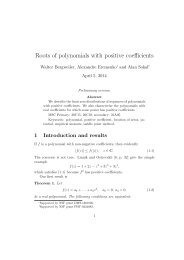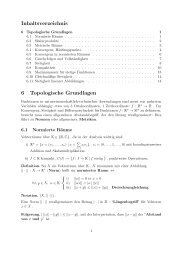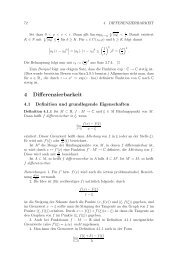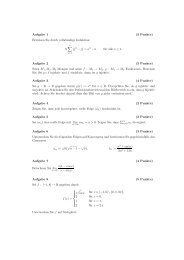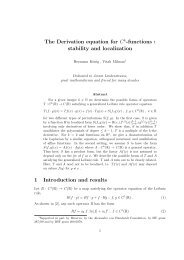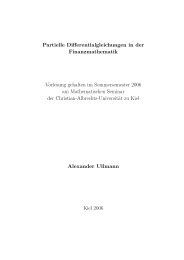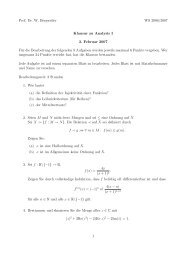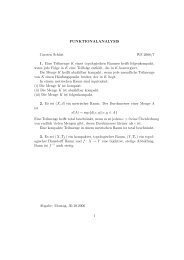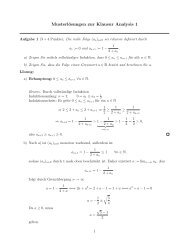r |f(z) - Christian-Albrechts-Universität zu Kiel
r |f(z) - Christian-Albrechts-Universität zu Kiel
r |f(z) - Christian-Albrechts-Universität zu Kiel
- No tags were found...
You also want an ePaper? Increase the reach of your titles
YUMPU automatically turns print PDFs into web optimized ePapers that Google loves.
18 WALTER BERGWEILER3.3. The distance to the closest zero. For z ∈ C we denote by δ(z) the distanceof z to the closest zero of f and we put d(r) := max |z|=r δ(z) for r > 0. For r > h(1)we put n := [g(r)] so that n ≥ 1 and h(n) ≤ r ≤ h(n + 1). As f has [h(n)/h ′ (n)]equally spaced zeros on the circle with radius h(n) it follows thatd(r) ≤ r − h(n) + 2πh(n) ] ≤ h(n + 1) − h(n) + 7h ′ (n)[h(n)h ′ (n)for large r. By (3.14) we have h ′ (n) ∼ h ′ (g(r)) andh(n + 1) − h(n) =∫ n+1as r → ∞. Together with (3.20) we thus find thatd(r) ≤ 9h ′ (g(r)) = 9g ′ (r) =n9r√A2 (r) =h ′ (u)du ∼ h ′ (g(r))9r√ψ(A1 (r)) ≤√9rψ ( 1a(r, f))2for large r. As mentioned at the beginning of the proof, the method thus also yieldsa function f with d(r) ≤ r/ √ ψ (a(r, f)) for large r.3.4. The minimum modulus of f. For |z| = r n := h ( n + 1 2)where n ∈ N wehave(3.21) log <strong>|f</strong>(z)| ≥wheren∑log(b k − 1) −k=1b k :=∞∑k=n+1( ) h ih(k)rn h ′ (k).h(k)log (1 + b k )Noting that [g(r n )] = n we see that the estimates for S 2 and S 3 in §3.2 show that(3.22)∞∑k=n+1log (1 + b k ) = o(A 0 (r n ))as n → ∞. To estimate the first sum on the right hand side of (3.21) we notethat if r n ≥ 2h(k), then b k ≥ 2. On the other hand, using (3.18) we see that if



